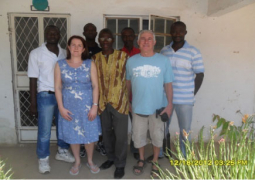
The
Kanifing Municipal Council on Thursday held a daylong workshop geared towards
raising the awareness of the participants on waste management.
Speaking
on the occasion, Mutarr Jammeh, programme analyst at NAOSU, said according to
UN Habitat report of 2010, more than 3.5 billion people around the world
receive no formal waste collection service.
He
said the impacts of these are manifold such as 40 per cent of waste dumped in
uncontrolled open dumps, and a further 40 per cent of burnt waste are burned in
the open fires, leading to significant public health risks.
Mr
Jammeh said The Gambia is no exception with growing population, growing
urbanisation and increasing consumer lifestyles increasing the volume and
changing the nature of the waste produced.
“This
is particularly acute in KMC, BCC and BAC as these are the local government
areas with the largest population and urbanization in the country,” he said.
“Furthermore,
waste management has become a burden to communities living within the coastal
areas, particularly in the urban and peri-urban areas. This is compounded by
the increasing social-economic and demographic pressure on the coastal areas of
The Gambia.”
He
said volumes and variety of waste including such as industrial waste,clinical
waste, social waste, and electronic waste have become a threat to social and
environmental health within the coastal areas due to improper waste disposal
practices.
KMC
protocol director Salama Njie said during the rainy season, a large amount of
waste drains into small waste bodies and finally into the coast resulting in
the pollution of marine, habitat and ecosystem.
Read Other Articles In Article (Archive)
Technicians trained on use of gases harmful to ozone layer
Aug 3, 2017, 12:42 PM
Senior NIA Officer, others charged
Nov 8, 2010, 10:51 AM


